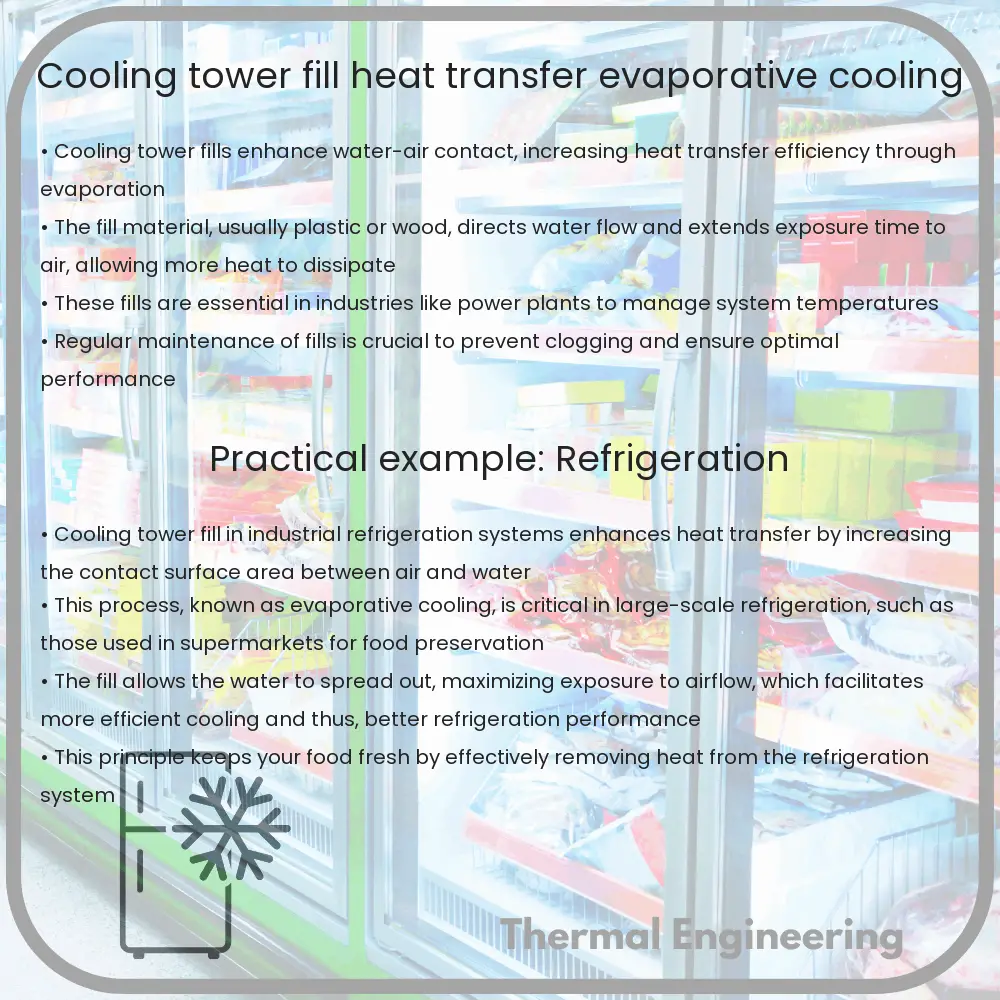Learn about cooling tower fill, its role in heat transfer and evaporative cooling, and the types of fills for efficient cooling tower operation.

Cooling Tower Fill: Understanding Heat Transfer & Evaporative Cooling
In the world of industrial engineering, cooling towers play a crucial role in maintaining optimal temperatures in various processes. The cooling tower fill is an essential component of cooling towers as it enhances the heat exchange process. This article will explore what cooling tower fill is, its function in heat transfer and evaporative cooling, and the types of fills used in cooling towers.
What is Cooling Tower Fill?
Cooling tower fill refers to the material placed within the cooling towers to increase the surface area available for the heat exchange between air and water. The main purpose of the fill is to facilitate the spread of water into a thin film, increasing water-air contact time, and thereby maximizing heat rejection. This function is vital for the efficient operation of a cooling tower.
How Does It Work?
When hot water enters the cooling tower, it is distributed uniformly across the fill material. As the water trickles down the fill’s layers, it forms a thin film over the surfaces. During this process, the heat from the water is transferred to the air. This transfer happens mainly by evaporation and convection. A cooling tower’s effectiveness largely depends on the amount of surface area the fill provides and how it facilitates the distribution and evaporation of water.
Types of Cooling Tower Fills
- Splash Fill: This type of fill breaks the falling water into small droplets, increasing the water-air interface and enhancing heat transfer. Splash fills are usually used in industrial cooling towers where the water contains more impurities.
- Film Fill: Consists of thin, closely packed sheets of material that form a labyrinth of vertical flutes, which the water streams down. Film fill promotes the spread of water into a thin film, which is optimal for heat transfer via evaporation. It is typically used in cleaner water environments as it can be blocked by debris more easily than splash fill.
Material Choices for Fills
The materials used for cooling tower fills must be durable and resistant to the harsh conditions inside the tower, like high temperatures and exposure to chemicals. Here are common materials:
- Polyvinyl Chloride (PVC): Widely used due to its resistance to heat and chemicals. It is effective up to temperatures around 55°C.
- Polypropylene (PP): Withstands higher temperatures than PVC and is also chemical resistant, making it suitable for hotter applications.
Importance of Proper Fill Selection
Choosing the right type of fill and material is crucial for operational efficiency. Wrong selection can lead to fill fouling, where the fill gets clogged with mineral deposits and impurities, reducing the cooling tower’s efficiency. It can also lead to higher energy consumption and operational costs. Therefore, understanding the specific needs and conditions of your cooling process is essential for selecting the appropriate fill.
Conclusion
Cooling tower fill is a pivotal component in the heat transfer process of cooling towers through evaporative cooling. By enhancing water-air contact, fills significantly impact a cooling tower’s performance. Whether it’s splash or film type, the effectiveness of the fill depends on its ability to distribute water evenly and maximize surface area for heat exchange. With the correct fill, cooling towers can operate optimally, providing substantial energy savings and efficacy in industrial and HVAC applications.